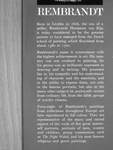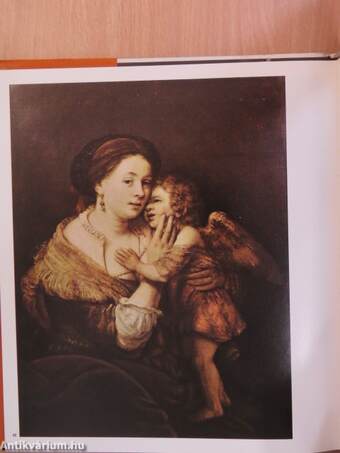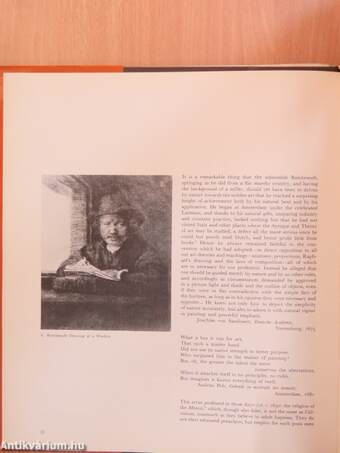1.067.081
kiadvánnyal nyújtjuk Magyarország legnagyobb antikvár könyv-kínálatát

VISSZA
A TETEJÉRE
JAVASLATOKÉszre-
vételek
Rembrandt
| Kiadó: | The Hamlyn Publishing Group Limited |
|---|---|
| Kiadás helye: | London |
| Kiadás éve: | |
| Kötés típusa: | Fűzött keménykötés |
| Oldalszám: | 84 oldal |
| Sorozatcím: | The Colour Library of Art |
| Kötetszám: | |
| Nyelv: | Angol |
| Méret: | 28 cm x 24 cm |
| ISBN: | 0-600-03755-x |
| Megjegyzés: | A könyv 48 színes, valamint 19 fekete-fehér reprodukciót tartalmaz. |
naponta értesítjük a beérkező friss
kiadványokról
naponta értesítjük a beérkező friss
kiadványokról
Fülszöveg
Born in Leyden in 1606, the son of a
miller, Rembrandt Harmensz van Rijn
is today considered to be the greatest
painter to have emerged from the Dutch
school of painting which flourished from
about 1580 to 1700.
Rembrandt's name is synonymous with
the highest achievements in art. His mas-
tery was not confined to painting, for
his genius was as brilliantly expressed in
drawing and in etching. His greatness
lies in his sympathy and his understand-
ing of character and the emotions, and
in the ability to express them, not only
in the famous portraits, but also in the
many other subjects he portrayed—scenes
from ordinary life, from the bible, groups
of worthy citizens.
Forty-eight of Rembrandt's paintings
from collections throughout Europe are
here reproduced in full colour. They are
representative of the many and varied
aspects of the work of this great master:
self portraits, portraits of men, women
and children, group commissions such
as The Night Watch,... Tovább
Fülszöveg
Born in Leyden in 1606, the son of a
miller, Rembrandt Harmensz van Rijn
is today considered to be the greatest
painter to have emerged from the Dutch
school of painting which flourished from
about 1580 to 1700.
Rembrandt's name is synonymous with
the highest achievements in art. His mas-
tery was not confined to painting, for
his genius was as brilliantly expressed in
drawing and in etching. His greatness
lies in his sympathy and his understand-
ing of character and the emotions, and
in the ability to express them, not only
in the famous portraits, but also in the
many other subjects he portrayed—scenes
from ordinary life, from the bible, groups
of worthy citizens.
Forty-eight of Rembrandt's paintings
from collections throughout Europe are
here reproduced in full colour. They are
representative of the many and varied
aspects of the work of this great master:
self portraits, portraits of men, women
and children, group commissions such
as The Night Watch, and his most famous
religious and genre paintings. Vissza
Témakörök
- Idegennyelv > Idegennyelvű könyvek > Angol > Művészetek > Festészet
- Idegennyelv > Idegennyelvű könyvek > Angol > Művészetek > Művészettörténet, általános
- Művészetek > Művészettörténet általános > Kontinensek művészete > Európa
- Művészetek > Művészettörténet általános > Idegen nyelv > Angol
- Művészetek > Festészet > Korszakok, stílusok > XVI. század > Barokk
- Művészetek > Festészet > Idegen nyelv > Angol
- Művészetek > Festészet > Tanulmányok, összefoglalók > Külföldi
- Művészetek > Festészet > Albumok > Külföldi festők
- Művészetek > Festészet > Általános festészet > Története

















